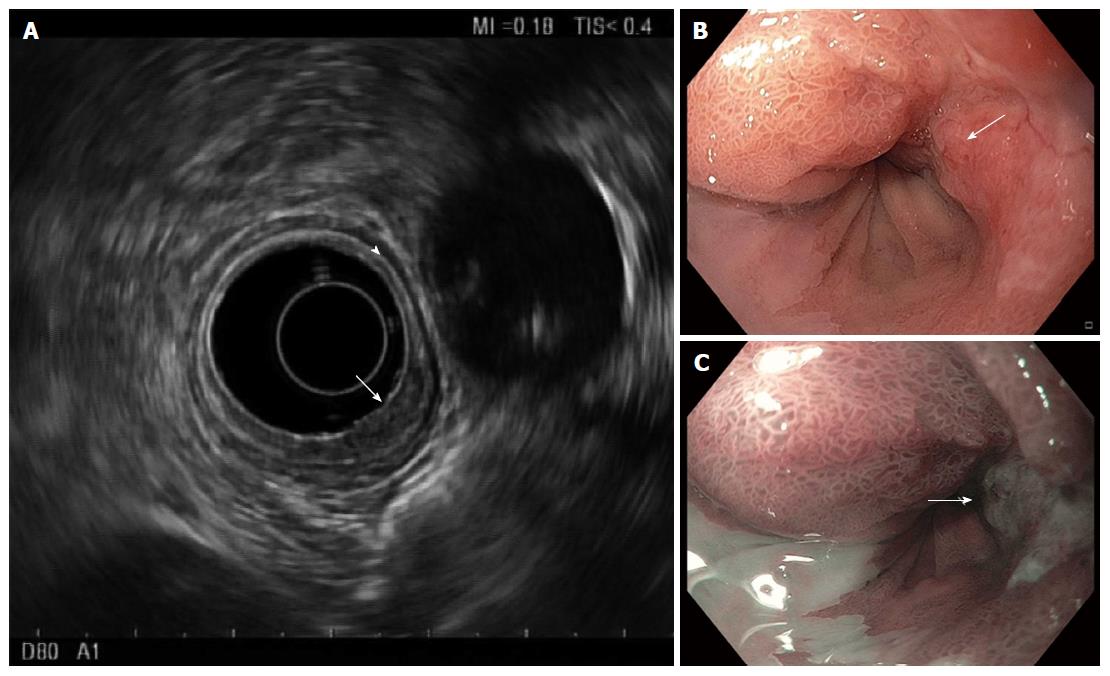Copyright
©The Author(s) 2017.
World J Gastroenterol. Feb 7, 2017; 23(5): 751-762
Published online Feb 7, 2017. doi: 10.3748/wjg.v23.i5.751
Published online Feb 7, 2017. doi: 10.3748/wjg.v23.i5.751
Figure 3 Endosonography of distal esophageal adenocarcinoma.
A: Five layers of the esophagus are visible with standard frequency (7.5 MHz) endoscopic ultrasound. From innermost to outermost: the hyperechoic (bright) superficial mucosa, hypoechoic (dark) deep mucosa, the submucosa (arrowhead), followed by the muscularis propria (hypoechoic, very dark), and adventitia (outer echogenic layer). The T1b adenocarcinoma (arrow) causes thickening and distortion of the mucosal layers and submucosa, without invasion of the muscularis propria; B: White-light; and C: Narrow band images are presented for comparison, with arrows to mark the cancer.
- Citation: DaVee T, Ajani JA, Lee JH. Is endoscopic ultrasound examination necessary in the management of esophageal cancer? World J Gastroenterol 2017; 23(5): 751-762
- URL: https://www.wjgnet.com/1007-9327/full/v23/i5/751.htm
- DOI: https://dx.doi.org/10.3748/wjg.v23.i5.751









